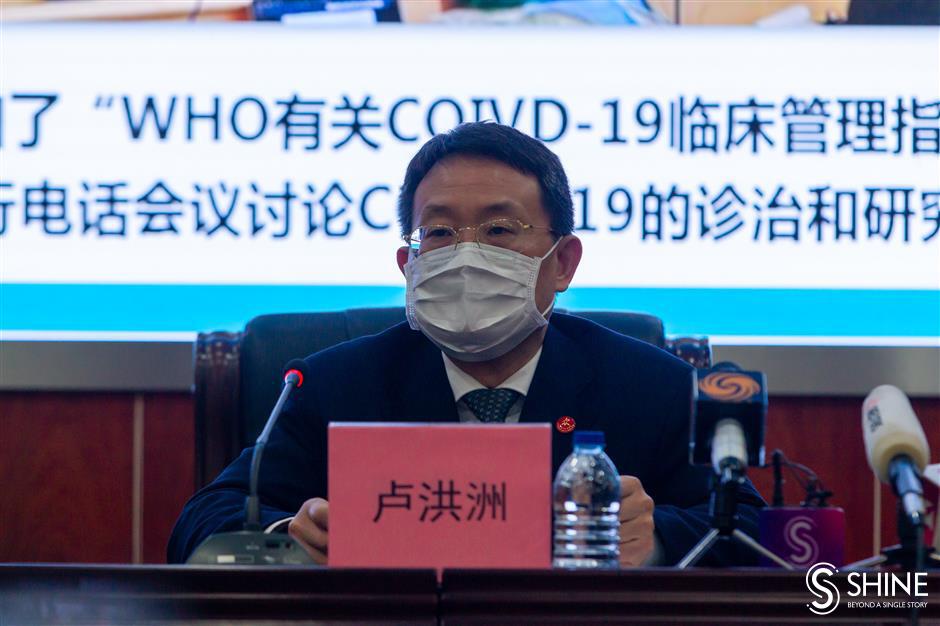
Lu Hongzhou, a professor at the Shanghai Public Health Clinical Center
The local recovery rate for novel coronavirus pneumonia reached nearly 50 percent, experts announced on Monday.
So far, 161 of 332 coronavirus patients have been discharged in Shanghai, according to the Shanghai Health Commission.
LuHongzhou, a professor at the Shanghai Public Health Clinical Center, a designated hospital for coronavirus patients, said treatment had been included multidisciplinary care, a combination of Chinese and Western medicine and “one person, one treatment.”
The multidisciplinary team consists of doctors from the intensive care unit, anextracorporealmembrane oxygenation group, acontinuous renal replacement therapies group, a respiratory therapy group and a mental health group, Lu said.
“The local best medical resources gather in the Shanghai Public Health Clinical Center,” said Lu.
He said traditional Chinese medicine had been having a positive effect on treatment for the infection.
“Almost all the current coronavirus patients in our hospital have received traditional Chinese medicine treatment,” said Lu. “The traditional approaches have their own advantages.”
He said two patients who had a high fever and suffered from constipation and abdominal distension got better after enema therapy, a traditional Chinese medicine treatment.
“We ensure that every patient receives the most appropriate treatment here,” said Lu.
 Zhou Shengjie / SHINE
Zhou Shengjie / SHINEAll the wards at the Shanghai Public Health Clinical Center are under negative pressure.
 Zhou Shengjie / SHINE
Zhou Shengjie / SHINEStainless steel surfaces in bathrooms make them easy toclean and sterilize.
Shanghai Daily visited a three-story inpatient building called A2 which had not yet been used. It can accommodate 84 patients while another three inpatient buildings — A1, A3 and A4 — can hold 96, 57 and 90 patients respectively.
All the hospital's 327 wards are under the negative pressure. The technique contributes to prevent cross-contaminationfrom room to room.
“The fresh air flows into the room,” said Lu, pointing at an air outlet on the ceiling of a ward, “The air that a patient breathes out will be filtered through an apparatus with a membrane. Once a patient is discharged, the membrane will be burnt.”
Lu said medical staff who had close contact with coronavirus patients would wear positive pressure respirators. The equipment provides them with a safe supply of air in the contaminated environment.
The walls and the floors of the wards, each with two beds and a bathroom, are smooth, seamless and corrosion resistant, thus easy to clean and sterilize.
Each floor houses three areas, including a clean area, buffer zone and restricted area. Each area has a separate elevator.
In the clean area, there is a tea room, a storage room and several offices equipped with computers and air purifiers.
Before entering wards, medical staff have to wash their hands and wear protective suits, gloves, shoe covers, face masks and goggles. After leaving a restricted area, they remove and discard the protective equipment, and take a shower.
“The medical waste gets carefully disposed and treated here,” said Lu. “We sterilize the waste, seal thebiohazarddisposal bag and use the waste incinerator in our hospital to burn them.”
To accommodate more patients, Shanghai Public Health Clinical Center is undergoing an expansion to make another 200 beds available.
